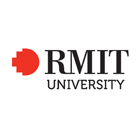Master of Science (Geospatial Sciences)
- Home
- Courses
- RMIT University (Royal Melbourne Institute of Technology University)
- Master of Science (Geospatial Sciences)
Master of Science (Geospatial Sciences)
RMIT’s geospatial sciences team is the largest academic group of its kind in Australia. You will be expertly supervised as you develop your analytical and problem-solving skills through further investigation into one of our key areas: cartography and visualisation earth observation and unmanned aerial systems 3D building modelling, digital twins…
Categories
COURSE DESCRIPTION
RMIT’s geospatial sciences team is the largest academic group of its kind in Australia.
You will be expertly supervised as you develop your analytical and problem-solving skills through further investigation into one of our key areas:
cartography and visualisation
earth observation and unmanned aerial systems
3D building modelling, digital twins and augmented reality (AR)
geodesy
land management and governance
GeoAI, GIS, machine learning and geoinformatics
remote sensing, laser sensing and aerial surveying
satellite positioning, multi-GNSS positioning, GNSS ionosphere sensing
space weather and its effects on GNSS
visual positioning systems and indoor localisation
hydrographic surveying.
This master degree may be undertaken in a project or thesis mode.
Geospatial sciences candidates may be eligible for a range of scholarships including:
Australian Postgraduate Awards?– funded by the Australian Government
PhD and Research Masters Scholarships?– funded by RMIT University
other postgraduate research scholarships.
Career
A master degree will provide you with a foundation for further studies into a PhD and employment in senior leadership and management research-based positions in a variety of government, non-government and corporate organisations. Advanced skills and specialised training amplify your career prospects, unlocking doors to high-level job opportunities and professional advancement.
EDUCATIONAL INSTITUTION
Since its establishment in 1887, Royal Melbourne Institute of Technology University (RMIT) has been meeting the needs of the community surrounding it. Originally a Working Men’s College, RMIT showed its flexibility during World War Two, training over 20,000 servicemen in communications to help with the war effort.Now, it is a true pioneer in international education, championing cross-border study opportunities with campuses in various countries. Granted formal university status in 1992, RMIT is ranked 21st in the world for universities that are less than 50 years old.RMIT is the largest higher education institution in Australia, currently with more than 82,000 students. With nearly 20% of those students coming from overseas, it is a university that truly welcomes diversity and is a melting pot of different cultures. RMIT has three campuses in Vietnam, a European hub in Barcelona, an office in Indonesia, and partners with 200+ institutions in 42 countries to provide study opportunities worldwide.
Since its establishment in 1887, Royal Melbourne Institute of Technology University (RMIT) has been meeting the needs of the community surrounding it. Originally a Working Men’s College, RMIT showed its flexibility during World War Two, training over 20,000 servicemen in communications to help with the war effort.
Now, it is a true pioneer in international education, championing cross-border study opportunities with campuses in various countries. Granted formal university status in 1992, RMIT is ranked 21st in the world for universities that are less than 50 years old.
RMIT is the largest higher education institution in Australia, currently with more than 82,000 students. With nearly 20% of those students coming from overseas, it is a university that truly welcomes diversity and is a melting pot of different cultures. RMIT has three campuses in Vietnam, a European hub in Barcelona, an office in Indonesia, and partners with 200+ institutions in 42 countries to provide study opportunities worldwide.




